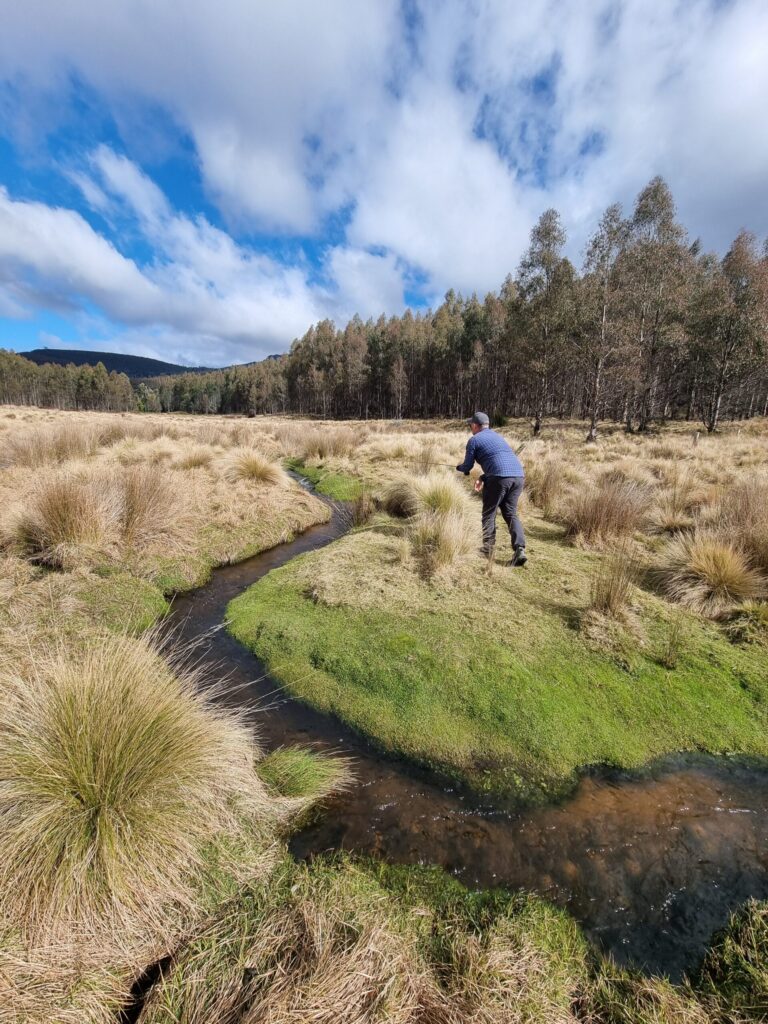Season opening and August rundown
The fly fishing season is off and racing in Tasmania, and what a change it has been from the past three seasons of wet and cold springs. Instead, this August has seen very mild weather, and ideal water conditions. The Western Lakes are running just above medium levels, and nice and clear without too much in-flows. Fish have been up against the edges searching out scud and snails, but still willing to charge down a very large wet along the undercuts. Some of these fish have been in great condition, indicating that they finished spawning early, and have fully recovered from this year’s short winter.
The lowland rivers are much the same, with a few of the headwaters already at normal October levels, with very clear flows (clearer than at any time during last year!). During a mid-week dry fly session we had no trouble getting wild browns and rainbows to the fly on the north-east twigwaters, and even found fish rising to naturals. The earliest we’ve ever had a big river mayfly hatch in previous El Nino years was September 19, and I expected this season to match those conditions.
El Nino fly fishing
So there is no doubt that El Nino is here, but what does that mean? After twenty years of guiding, it is clear that El Nino will bring a few things: the fish will be slightly smaller than wet years on average, but on the flipside the fishing will be easier, with better flows and more consistent hatches. Don’t expect a repeat of last year’s disastrous spring floods and high flows, rather expect great consistent flows, and obrilliant fishing on the tailwaters and spring creek headwaters.
There is no doubt that cormorants will also be a feature sooner or later, as water across the nation contracts, and large flocks of the fish-eating birds disperse to the rivers and cleanout any susceptible trout under 2lbs. This can be a curse, but I actually like the Ying and Yang of cormorants: the trout that escape predation get much bigger (as there is less competition from other fish), leading to some brilliant dominant fish for the next season or two. The trick with avoiding the worst of the cormorants is to find sections of streams with good weedbeds, and good in-stream debris (logjams etc), both of which offer permanent protection for river trout. Conversely, if you hit a long and open glide, and only find tiny fish or schooling-up trout, assume that cormorants are already using it as a feeding ground and move on.
Get in touch with us here if you would like some sightfishing on the small streams, or chase some bigger fish from the raft this spring. Any day from October onwards could be the best day of this season.

